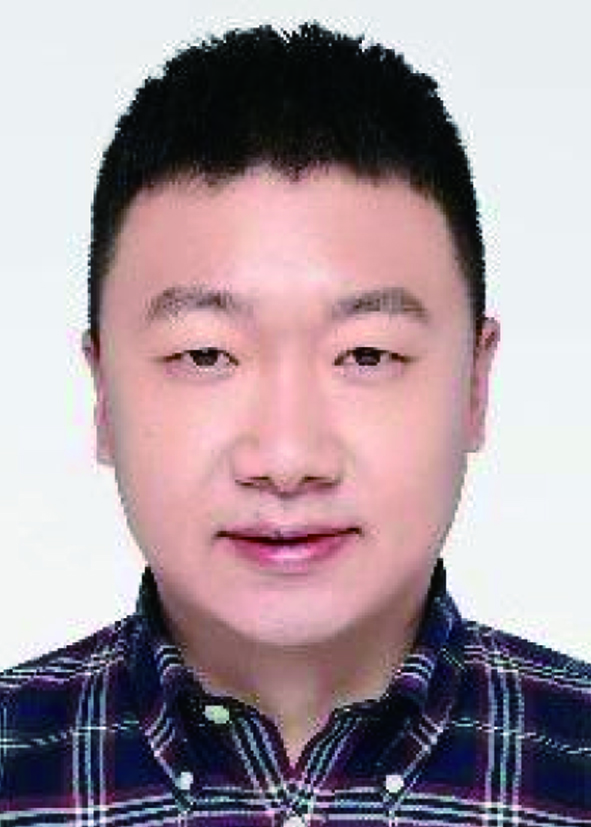| Citation: |
Tianhua Liu, Xiangyue Meng, Chunru Wang. Innovative applications of fullerenes in perovskite solar cells[J]. Journal of Semiconductors, 2025, 46(6): 060401. doi: 10.1088/1674-4926/25050007
****
T H Liu, X Y Meng, and C R Wang, Innovative applications of fullerenes in perovskite solar cells[J]. J. Semicond., 2025, 46(6), 060401 doi: 10.1088/1674-4926/25050007
|
Innovative applications of fullerenes in perovskite solar cells
DOI: 10.1088/1674-4926/25050007
CSTR: 32376.14.1674-4926.25050007
More Information-
References
[1] Yu Z H, Yang Z B, Ni Z Y, et al. Simplified interconnection structure based on C60/SnO2-x for all-perovskite tandem solar cells. Nat Energy, 2020, 5, 657 doi: 10.1038/s41560-020-0657-y[2] Chen H, Liu C, Xu J, et al. Improved charge extraction in inverted perovskite solar cells with dual-site-binding ligands. Science, 2024, 384(6692), 189 doi: 10.1126/science.adm9474[3] Said A A, Aydin E, Ugur E, et al. Sublimed C60 for efficient and repeatable perovskite-based solar cells. Nat Commun, 2024, 15(1), 708 doi: 10.1038/s41467-024-44974-0[4] Li X D, Sun J, Li B Z, et al. Managing excess PbI2 for efficient perovskite solar cells. J Semicond, 2023, 44(8), 080202 doi: 10.1088/1674-4926/44/8/080202[5] Liu L, Zuo C T, Liang G X, et al. Effect of drying methods on perovskite films and solar cells. J Semicond, 2024, 45(1), 010501 doi: 10.1088/1674-4926/45/1/010501[6] Zeng Y H, Ding Z T, Liu Z K, et al. Efficiency-loss analysis of monolithic perovskite/silicon tandem solar cells by identifying the patterns of a dual two-diode model’s current-voltage curves. J Semicond, 2023, 44(8), 082702 doi: 10.1088/1674-4926/44/8/082702[7] Ren X X, Wang J F, Lin Y, et al. Mobile iodides capture for highly photolysis- and reverse-bias-stable perovskite solar cells. Nat Mater, 2024, 23(6), 810 doi: 10.1038/s41563-024-01876-2[8] Meirzadeh E, Evans A M, Rezaee M, et al. A few-layer covalent network of fullerenes. Nature, 2023, 613(7942), 71 doi: 10.1038/s41586-022-05401-w[9] Feng K, Wang G L, Lian Q, et al. Non-fullerene electron-transporting materials for high-performance and stable perovskite solar cells. Nat Mater, 2025, 24(5), 770 doi: 10.1038/s41563-025-02163-4[10] Park S, Jeong S Y, Kim J, et al. Synergistic enhancement of charge extraction and heat dissipation in inverted perovskite solar cells via n-doped top interlayers. Energy Environ Sci, 2024, 17(21), 8304 doi: 10.1039/D4EE02836H[11] Chen J F, Luo J F, Hou E L, et al. Efficient tin-based perovskite solar cells with trans-isomeric fulleropyrrolidine additives. Nat Photonics, 2024, 18(5), 464 doi: 10.1038/s41566-024-01381-7[12] Xing Z, Ma S X, Chen B W, et al. Solubilizing and stabilizing C60 with n-type polymer enables efficient inverted perovskite solar cells. Joule, 2025, 9(4), 101817 doi: 10.1016/j.joule.2024.101817[13] Fei C B, Kuvayskaya A, Shi X Q, et al. Strong-bonding hole-transport layers reduce ultraviolet degradation of perovskite solar cells. Science, 2024, 384(6700), 1126 doi: 10.1126/science.adi4531[14] You S, Zeng H P, Liu Y H, et al. Radical polymeric p-doping and grain modulation for stable, efficient perovskite solar modules. Science, 2023, 379(6629), 288 doi: 10.1126/science.add8786[15] Duan T W, You S, Chen M, et al. Chiral-structured heterointerfaces enable durable perovskite solar cells. Science, 2024, 384(6698), 878 doi: 10.1126/science.ado5172[16] Ge K Y, Liang C J. Improved efficiency and stability of inverse perovskite solar cells via passivation cleaning. J Semicond, 2024, 45(10), 102801 doi: 10.1088/1674-4926/24040033[17] Li M J, Zhang Z L, Sun J, et al. Perovskite solar cells with NiOx hole-transport layer. J Semicond, 2023, 44(10), 100201 doi: 10.1088/1674-4926/44/10/100201[18] Lin R X, Wang Y R, Lu Q W, et al. All-perovskite tandem solar cells with 3D/3D bilayer perovskite heterojunction. Nature, 2023, 620(7976), 994 doi: 10.1038/s41586-023-06278-z[19] Lin Y X, Lin Z C, Lv S L, et al. A Nd@C82-polymer interface for efficient and stable perovskite solar cells. Nature, 2025 doi: 10.1038/s41586-025-08961-9[20] You S, Zhu H W, Shen Z J, et al. C60-based ionic salt electron shuttle for high-performance inverted perovskite solar modules. Science, 2025, eadv4701 doi: 10.1126/science.adv4701 -
Proportional views





 Tianhua Liu Tinahua Liu obtained his bachelor's degree from North China Electric Power University in 2019 and his master's degree from the University of Chinese Academy of Sciences in 2022. He is currently a doctoral student at the University of Chinese Academy of Sciences, under the supervision of Associate Professor Xiangyue Meng. His research focuses on the crystal growth and applications of perovskite materials.
Tianhua Liu Tinahua Liu obtained his bachelor's degree from North China Electric Power University in 2019 and his master's degree from the University of Chinese Academy of Sciences in 2022. He is currently a doctoral student at the University of Chinese Academy of Sciences, under the supervision of Associate Professor Xiangyue Meng. His research focuses on the crystal growth and applications of perovskite materials. Xiangyue Meng received his doctoral degree in Physical Chemistry from the Institute of Chemistry, Chinese Academy of Sciences, in 2014. He is currently an Associate Professor at the University of Chinese Academy of Sciences. His current research interests include optoelectronic materials and devices, particularly focusing on fullerene-based materials for organic solar cells and lead-free tin-based perovskite solar cells.
Xiangyue Meng received his doctoral degree in Physical Chemistry from the Institute of Chemistry, Chinese Academy of Sciences, in 2014. He is currently an Associate Professor at the University of Chinese Academy of Sciences. His current research interests include optoelectronic materials and devices, particularly focusing on fullerene-based materials for organic solar cells and lead-free tin-based perovskite solar cells. Chunru Wang received his doctoral degree in Chemistry from the Dalian Institute of Chemical Physics, Chinese Academy of Sciences, in 1992. He is currently a Research Fellow at the Institute of Chemistry, Chinese Academy of Sciences. His current research interests include the synthesis, characterization, and applications of fullerenes and metal-encapsulated fullerenes, particularly in organic solar cells, magnetic resonance imaging agents, and biomedical applications.
Chunru Wang received his doctoral degree in Chemistry from the Dalian Institute of Chemical Physics, Chinese Academy of Sciences, in 1992. He is currently a Research Fellow at the Institute of Chemistry, Chinese Academy of Sciences. His current research interests include the synthesis, characterization, and applications of fullerenes and metal-encapsulated fullerenes, particularly in organic solar cells, magnetic resonance imaging agents, and biomedical applications.
 DownLoad:
DownLoad:














